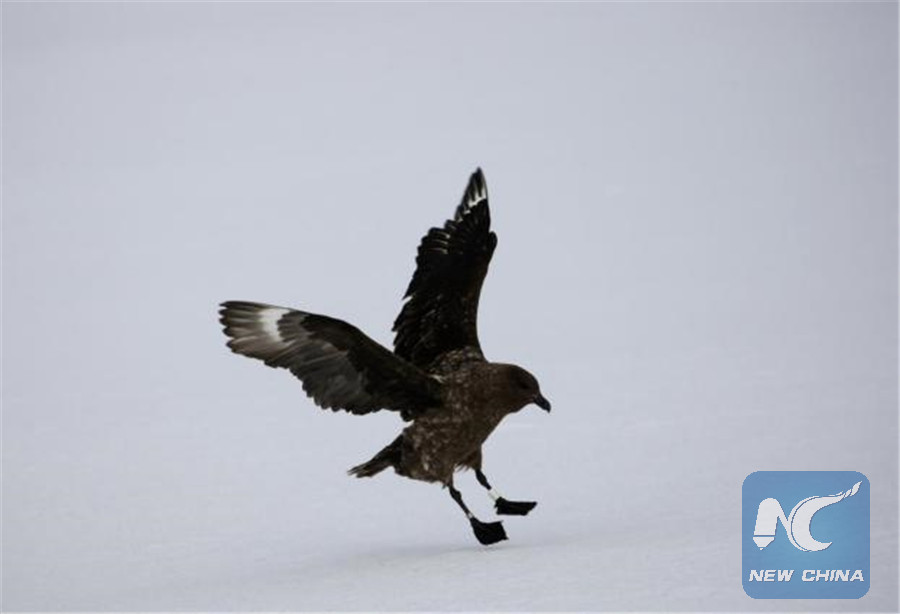
Skua (Xinhua)
ANTARCTICA, Dec. 29 (Xinhua) -- It is very lucky for us to have captured the images of the small and quick seabirds on the land of ice and snow while we are heading all the way west from Zhongshan Station to the expedition's next stop -- Changcheng Station-- on the research vessel and icebreaker Xuelong, or Snow Dragon.
It has been nearly two months since the research team departed from Shanghai on November 2 for China's 33rd Antarctic expedition, which is scheduled to last six months.

Skua (Xinhua)
There are more than 50 species of seabirds in the Antarctica. The gull-like skua is the only recorded species that has been spotted at the Geographic South Pole, the southernmost point on the Antarctica.
Skuas are regarded as the Antarctica's "robbers," for they never build their own nests. Instead, they take others'. As the natural enemy of penguins, skuas always try to "steal" the eggs or chicks at the breeding colonies of penguins for a good meal.

Skua (Xinhua)
They are often seen "stealing" food around the research stations, tearing apart boxes and taking away whatever they need.
Like most seabirds, skuas can be found in both the North Pole and the South Pole. They can live as long as 30 years, mainly living off other birds' carcasses, eggs and chicks.

Snow petrel (Xinhua)
Snow petrels are generally recognized as one of the most beautiful bird species in the Antarctica, even given by some a more beautiful name: the fairies of the south. Its whole body is pure white, except the eyes, beak and claws.

Snow petrel (Xinhua)
Snow petrels normally feed on krill, tiddlers and cuttlefish. They sometimes seek carcasses for food, just like skuas.

Snowy sheathbill (Xinhua)
Snowy sheathbills are the Antarctica's garbage cleaners. They eat anything you can or cannot imagine, from seaweed scraps, broken eggshells and carcasses, to seals' snot and faeces, and even engine oil leaked from research stations and abandoned batteries.

Antarctic petrel (Xinhua)
Antarctic petrels are what we see most frequently as we sail across the Southern Ocean. They like to fly together with other bird species and prey on fish and shrimps alongside whales.
When not flying, they prefer standing on icebergs to rest for a while.

Antarctic prion (Xinhua)
You won't fail to notice the Antarctic prion, with black eye lines and a bluish grey "coat" marked by a capital "M," when you set foot on this continent. They can be found in a vast area, stretching from southern Australia to coastal areas of South America.
(Photos are provided by Miao Xing, a researcher with China's 33rd Antarctic expedition, and Mu Lianqing, a researcher with China's 32nd Antarctic expedition.)

